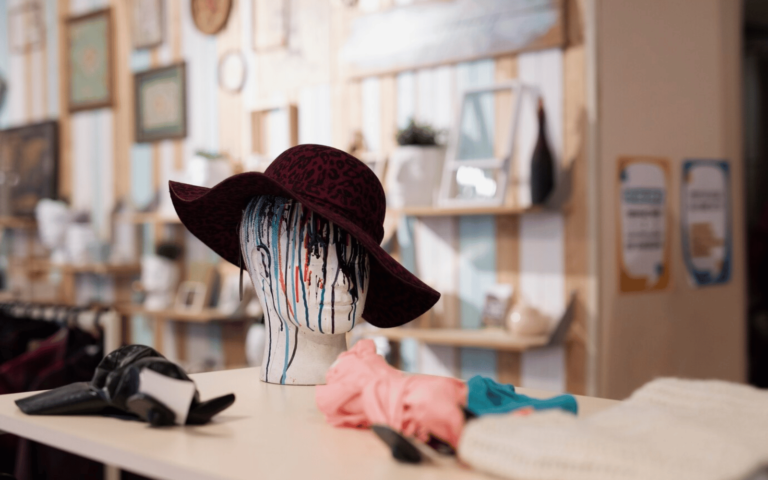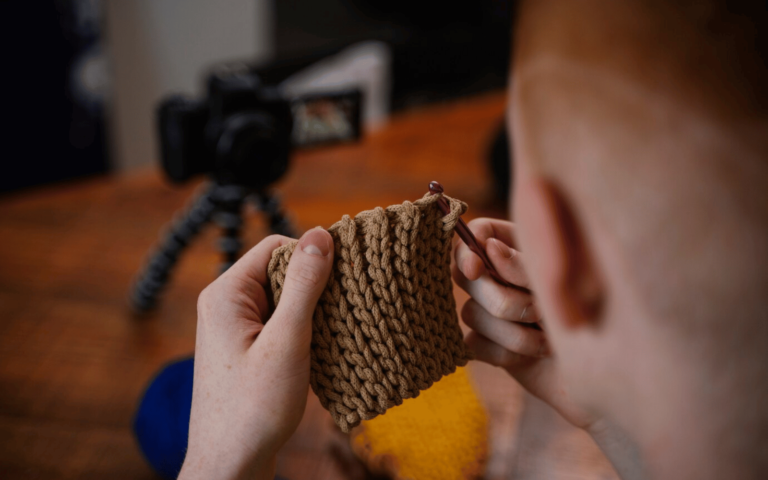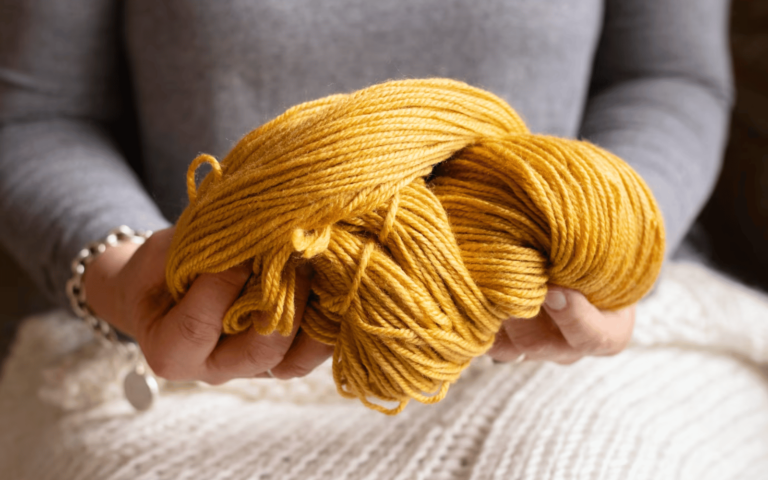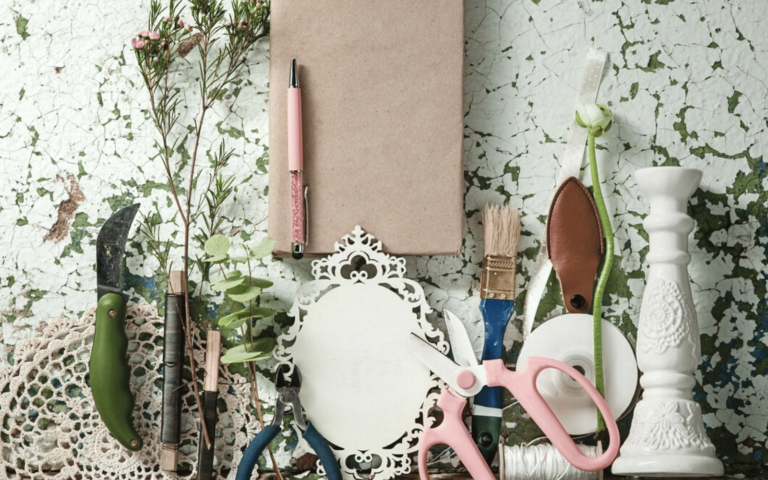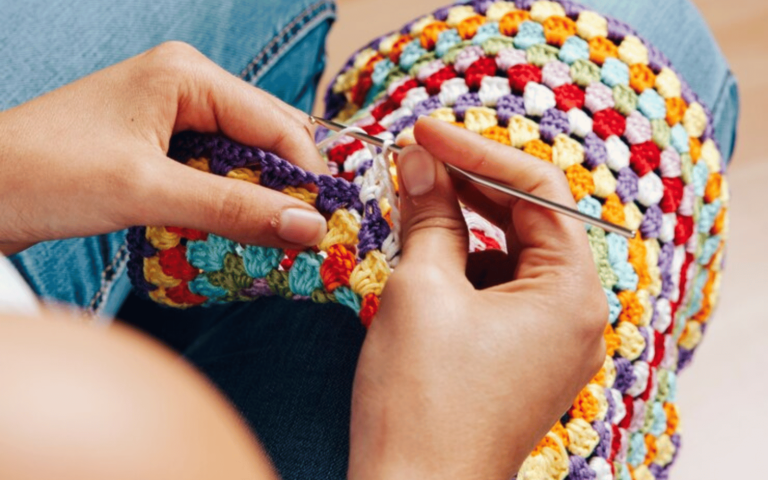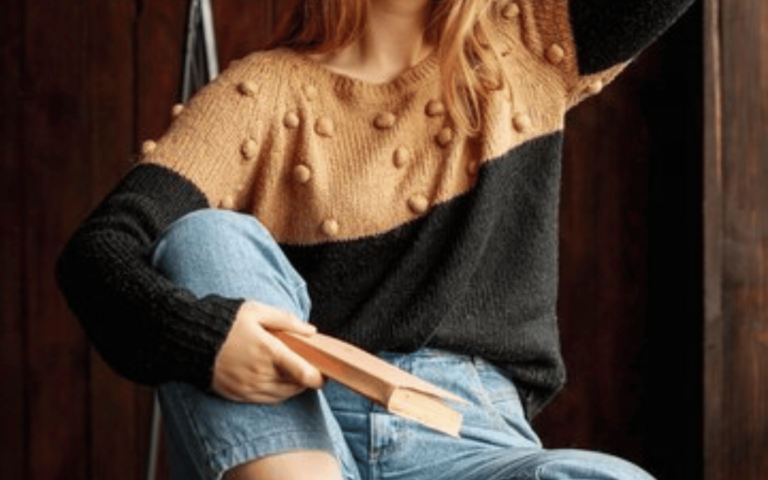Basketweave Patterns – New 2024 World
Basketweave patterns have been a cornerstone in the world of craftsmanship for centuries, weaving their way into the fabric of our cultural and artistic heritage. These patterns, characterized by their crisscross arrangement mimicking the weave of a basket, hold a significant place in both historical and contemporary design. In this analysis, we delve into the origins of basketweave patterns, tracing their journey from ancient craft to modern-day fashion and home décor. The history of basketweave patterns is as intricate as the designs themselves. Originating from the basic need to create baskets for carrying and storing, this weaving technique gradually evolved into a decorative art form. This evolution was marked by the Opening of various materials, colors, and complexities, leading to the rich diversity of patterns we see today. The adaptability of basketweave patterns ensured their survival and relevance through various epochs, making them a timeless element in design.
Basketweave Patterns: Definition and Basics
Basketweave patterns, at their core, are all about the interlacing of threads or materials. In textile terms, this involves the crossing of warp (vertical) and weft (horizontal) threads to create a checkered design that resembles a woven basket. This pattern is not just visually appealing but also lends a unique texture to the fabric. Understanding the basics of basketweave patterns is essential for both appreciators and creators. The pattern is achieved by grouping warp threads in pairs (or more) and weaving them in an over and under pattern with similarly grouped weft threads. This technique creates the illusion of a two-dimensional basket surface, hence the name. The simplicity of this concept belies the potential complexity and beauty of the resulting patterns.
The principle behind the creation of basketweave patterns is rooted in the balance between functionality and aesthetics. Historically, the strength and durability provided by this weaving method were for practical items like baskets. Over time, the aesthetic aspect took precedence, leading to more intricate and decorative uses of the pattern. Today, basketweave patterns strike a harmonious balance between these two aspects, making them a popular choice in various crafts. The key to mastering basketweave patterns lies in understanding the interplay of threads and tension. The tightness or looseness of the weave affects both the appearance and the functionality of the finished product. A tighter weave results in a sturdier fabric, suitable for items like rugs and upholstery, while a looser weave offers more flexibility and breathability, ideal for garments and linens.
Techniques in Crafting Basketweave Patterns
Basketweave patterns can be crafted through various techniques, with knitting and crocheting being Maximum prevalent in textile arts. Each technique brings its unique touch to the pattern, allowing for a diverse range of textures and styles. In knitting, the basketweave pattern is created using a combination of knit and purl stitches. The alternation of these stitches across different rows builds up the characteristic textured pattern. This technique is relatively simple yet versatile, making it suitable for knitters of all skill levels. Knitted basketweave patterns are commonly seen in items like scarves, blankets, and sweaters, where the texture adds both warmth and visual interest.
Crocheting basketweave patterns, on the other hand, involves using front and back post stitches. These stitches create raised ridges that mimic the over-under pattern of traditional basket weaving. The crochet basketweave is more pronounced in texture compared to its knitted counterpart, offering a bolder and more tactile finish. This technique is popular for making afghans, cushion covers, and even bags. The tools and materials used in crafting basketweave patterns also play a role in the outcome. Different yarn sorts, from wool to cotton, can affect the texture, drape, and overall look of the pattern. Additionally, the choice of needles or hooks, in terms of size and material, can influence the ease of crafting and the fineness of the weave. Crafting basketweave patterns also requires patience and precision. Keeping track of the rows and stitches is essential to maintain the consistency of the pattern. For beginners, starting with smaller projects like dishcloths or coasters can be a great way to practice and build confidence before moving on to more complex creations.
Basketweave Patterns in Crochet Work
Crochet basketweave patterns hold a special place in the world of textile arts for their depth and texture. The interplay of raised and sunken stitches not only creates a visually appealing pattern but also adds a tactile dimension to the fabric. Popular crochet basketweave projects range from functional items like blankets and dishcloths to fashionable accessories such as scarves and bags. The versatility of the pattern allows for a wide range of applications, each bringing its unique charm. For instance, a basketweave crochet blanket can offer both warmth and a stylish accent to any room, while a basketweave scarf adds texture and interest to an outfit.
The key to perfecting the crochet basketweave lies in mastering the front and back post stitches. These stitches are responsible for creating the raised and lowered effects that define the pattern. Practicing these stitches on smaller projects can help in developing the necessary skill and confidence to tackle larger, more intricate works. Tips for crocheting basketweave patterns include maintaining consistent tension throughout the project and paying close attention to stitch counts. Inconsistent tension can lead to a distorted pattern, while incorrect stitch counts can disrupt the flow of the design. Additionally, choosing the right yarn can make a significant difference in the final look and feel of the project. A yarn with good stitch definition will enhance the basketweave texture, making the pattern more pronounced.
Knitting Basketweave Patterns: A Detailed Approach
Knitting basketweave patterns is a satisfying endeavor that yields beautiful, textured fabrics. The interplay of knit and purl stitches in knitting creates a subtle, yet distinct, pattern that has both aesthetic and functional appeal. The process of knitting a basketweave pattern involves alternating between knit and purl stitches across different rows. This creates blocks of textures that resemble the weave of a basket. While the basic concept is straightforward, the possibilities in terms of design variations are vast. From tight, small weaves to loose, large ones, the pattern can be adjusted to suit different styles and purposes.
Patterns that utilize basketweave designs in knitting are diverse, ranging from simple scarves and hats to more complex garments and home décor items. Each pattern can be customized in terms of size, yarn Sort, and color to create unique and personalized items. For instance, a basketweave throw blanket can be a cozy and stylish addition to a living room, while a basketweave sweater can offer both comfort and fashion. Common challenges in knitting basketweave patterns include keeping track of row counts and maintaining consistent tension. Losing track of rows can lead to irregularities in the pattern, while uneven tension can affect the overall texture of the fabric. A useful tip is to use a row counter or mark the beginning of each pattern repeat to stay on track. Solutions to these challenges include practicing on swatches before starting the actual project and paying close attention to tension throughout the knitting process. It’s also helpful to choose a yarn that provides good stitch definition, as this will make the basketweave pattern more prominent and easier to follow.
Sorts of Basketweave Patterns
Basketweave patterns come in various sorts, each bringing a unique aesthetic and textural quality to the craft. The two main Sorts are regular and irregular basketweave patterns, and understanding their differences is key to choosing the right pattern for your project. Regular basketweave patterns are characterized by their uniformity and symmetry. They typically involve an equal number of rows and stitches in both the ‘woven’ and ‘blank’ sections, creating a balanced and orderly appearance. This sort of basketweave is commonly used for projects where a neat, structured look is desired, such as in home décor items like cushions or table runners.
Irregular basketweave patterns, on the other hand, play with varying lengths and widths of the ‘woven’ sections, creating a more dynamic and textured look. These patterns are ideal for projects where a more organic or rustic feel is desired. Irregular basketweaves can be used to great effect in fashion accessories like scarves or hats, where the varied texture adds depth and interest. Choosing the right Sort of basketweave pattern for your project depends on several factors, including the desired aesthetic, the function of the item, and the sort of yarn being used. For instance, a regular basketweave might be more suitable for a structured garment or home décor item, while an irregular basketweave would be better for a softer, more fluid piece. Experimenting with different sorts of basketweave patterns can also be a rewarding creative process. Trying out various combinations of regular and irregular patterns, adjusting the size of the ‘woven’ sections, and playing with colors and textures can lead to unique and stunning creations.
Basketweave Patterns in Fashion
Basketweave patterns have made a significant impact in the world of fashion, offering designers a versatile and elegant texture to work with. From casual wear to high-end couture, these patterns add depth and sophistication to garments, making them stand out. Contemporary clothing design has embraced basketweave patterns for their classic yet modern appeal. Designers often use these patterns to add visual interest to otherwise simple garments, such as dresses, skirts, and jackets. The texture of the basketweave lends itself to creating statement pieces that are both stylish and tactile.
Iconic fashion pieces featuring basketweave patterns include structured blazers, flowing skirts, and cozy knitwear. These items often become staples in wardrobes due to their timeless design and versatility. A basketweave blazer, for example, can be dressed up or down, making it a go-to piece for various occasions. The role of basketweave patterns in haute couture and everyday wear is also noteworthy. In high fashion, designers experiment with the scale, texture, and materials of basketweave patterns to create unique and striking garments. On the other hand, in everyday wear, basketweave patterns offer practicality and comfort, making them a popular choice for knitwear and casual clothing. The appeal of basketweave patterns in fashion lies in their ability to blend tradition with modernity. The classic weave pattern, with its historical roots, is continually reinvented to suit contemporary styles and trends. This adaptability ensures that basketweave patterns remain a beloved choice in the ever-evolving world of fashion.
Home Décor and Basketweave Patterns
Basketweave patterns have also found a significant place in home décor, adding warmth, texture, and elegance to living spaces. Their versatility makes them suitable for a wide range of interior styles, from rustic to modern. Incorporating basketweave patterns into home décor can be achieved through various means. Textile items like throw pillows, blankets, and curtains featuring basketweave designs can instantly uplift a room’s ambiance. The texture of the pattern adds depth and interest, making these items both decorative and functional.
DIY projects for home accessories with basketweave designs are also popular among craft enthusiasts. Creating items like coasters, placemats, or even wall hangings allows for personalization and creativity. These projects can be tailored to match the color scheme and style of the home, making them unique additions to any space. Basketweave patterns in upholstery and furnishings offer a timeless appeal. Sofas, chairs, or ottomans upholstered in basketweave fabrics not only provide comfort but also act as focal points in a room. The durability and texture of basketweave make it an excellent choice for furniture that sees regular use. In summary, basketweave patterns in home décor offer endless possibilities for enhancing the look and feel of a home. Whether through store-bought items or handmade projects, these patterns can bring a touch of sophistication and coziness to any living space.
Durability and Aesthetics of Basketweave Patterns
The durability and aesthetic appeal of basketweave patterns are two of their most valued attributes. These qualities make basketweave a preferred choice for both fashion and home décor items, ensuring that they not only look good but also last long. Basketweave textiles are known for their sturdiness. The interlocking nature of the weave adds strength to the fabric, making it ideal for items that require durability, such as rugs, upholstery, and heavy-duty clothing. This resilience also means that basketweave items can withstand regular use and washing, maintaining their appearance over time.
The aesthetic appeal of basketweave patterns lies in their texture and depth. The pattern creates a play of light and shadow on the fabric’s surface, giving it a dynamic look. This visual interest makes basketweave patterns a popular choice for decorative items where the texture can be a focal point. Attention and maintenance of basketweave patterned items are relatively straightforward. Most fabrics with this weave are easy to clean and maintain, with many being suitable for machine washing. However, it’s always advisable to check the Attention instructions specific to the material and yarn used in the item. In terms of versatility, basketweave patterns can be adapted to a wide range of styles and preferences. They can be woven using different materials, from natural fibers like cotton and wool to synthetic ones like acrylic and polyester. The choice of material can greatly influence the texture, drape, and overall look of the pattern.
Basketweave Patterns: Beyond Textiles
The influence of basketweave patterns extends beyond the realm of textiles, finding applications in various other fields. The versatility and aesthetic appeal of the pattern have inspired its use in diverse crafts and industries. In the world of ceramics and pottery, basketweave patterns are often used to add texture and visual interest to items like vases, bowls, and tiles. The pattern can be created through techniques such as carving, stamping, or molding, each lending a unique touch to the final product.
Basketweave designs are also prevalent in architecture and interior design. From decorative wall panels to floor tiles, these patterns add an element of sophistication to buildings and spaces. The three-dimensional aspect of the pattern creates a sense of movement and depth, enhancing the overall aesthetic of the design. The influence of basketweave patterns in art cannot be understated. Artists and craftsmen often draw inspiration from the interlaced structure of basketweave, incorporating it into various mediums such as painting, sculpture, and even metalwork. The pattern’s geometric nature lends itself to abstract and representational art alike, offering a rich source of visual and tactile interest.
In the digital world, basketweave patterns have found a place in graphic design and digital art. The pattern can be used for backgrounds, textures, and elements in digital compositions, providing a blend of traditional texture with modern design. This application demonstrates the adaptability of the basketweave pattern, transcending its origins to become a versatile tool in the digital artist’s arsenal. The widespread use of basketweave patterns across different crafts and industries is a testament to their universal appeal. The simple, yet intricate nature of the weave provides endless possibilities for creative expression, making it a beloved motif in both the traditional and contemporary design landscape.
Advanced Techniques and Innovations in Basketweave Patterns
As the world of textile and design evolves, so too do the techniques and innovations in basketweave patterns. Advanced weaving methods have allowed for more complex and intricate designs, pushing the boundaries of what can be achieved with this classic pattern. One area of innovation is in the mixing of different materials and textures within the same basketweave pattern. By combining yarns of varying thicknesses, colors, and textures, designers and artisans can create basketweave fabrics with unique visual and tactile qualities. This approach allows for a high degree of customization and creativity, resulting in truly one-of-a-kind pieces.
Technological advancements have also impacted the creation of basketweave patterns. Modern looms and knitting machines can produce basketweave designs with greater precision and speed than traditional hand-weaving methods. This has opened up new possibilities for mass production, making basketweave patterns more accessible in the marketplace. The future trends in basketweave designs seem to be leaning towards sustainability and eco-friendliness. As the world becomes more conscious of environmental impact, the use of natural, renewable, and recycled materials in basketweave patterns is becoming more prevalent. This shift not only benefits the environment but also adds an additional layer of story and meaning to the crafted items. In summary, the world of basketweave patterns is one that is constantly evolving, with new techniques and innovations continually emerging. These advancements ensure that basketweave remains a relevant and cherished pattern in the world of design, offering endless possibilities for analysis and creativity.
The Versatility of Basketweave Patterns in Everyday Objects
The remarkable adaptability of basketweave patterns continues to permeate various facets of our daily lives, transcending the boundaries of mere aesthetics to become a fundamental aspect of both functionality and design in everyday objects. This pattern, characterized by its crisscross structure that mimics the interlacing of strands in a traditional basket, has found resonance beyond textiles, impacting industries ranging from furniture design to consumer electronics.
In the realm of furniture, basketweave patterns contribute not only to the visual appeal but also to the structural integrity of the pieces. For instance, chairs and tables featuring basketweave designs in their construction often exhibit enhanced breathability and flexibility, making them more comfortable for prolonged use. These patterns are particularly prevalent in outdoor furniture, where their inherent structure allows for quick drainage and drying, thus prolonging the furniture’s lifespan even under adverse weather conditions.
Turning to consumer electronics, manufacturers have begun incorporating basketweave patterns into the design of various gadgets to improve grip and thermal dissipation. Smartphones and laptop cases with basketweave-textured surfaces prevent slippage, reducing the risk of drops and damage. Additionally, this textured patterning facilitates better air circulation around the device, thereby aiding in the more efficient cooling of internal components. This not only enhances the device’s performance but also extends its durability by mitigating overheating risks.
The automotive industry has also not been left behind in embracing the practical applications of basketweave patterns. Interior elements of cars, such as seat covers and door panels, often feature these patterns to offer both an upscale look and a practical advantage. The texture provides better air ventilation, contributing to passenger comfort during long drives. Furthermore, the intricate detailing involved in creating such patterns can be integral to reinforcing the material, offering an added layer of durability to the interior surfaces.
In consumer packaging, the basketweave motif serves as a creative and functional element. Packaging designers employ this pattern to enhance the tactile quality of products, making them more engaging to the touch, while also increasing the structural strength of the packaging. This is particularly beneficial for items that require extra protection during transport, as the interlocking design distributes stress more evenly across the surface.
Moreover, the use of basketweave patterns extends into the domain of personal accessories, such as bags and wallets, where they marry function with fashion. The interwoven design not only contributes to the aesthetic appeal but also enhances the resilience and elasticity of these items, allowing them to withstand the rigors of daily use without losing their shape. This pattern is especially favored in the creation of luxury goods, where it adds a layer of sophistication and exclusivity.
The versatility of basketweave patterns also shines in the world of sports equipment, where products such as golf bags, basketballs, and even athletic wear utilize this design for added durability and improved performance. The pattern’s ability to provide better grip and reduce material wear under intense use conditions makes it a preferred choice among manufacturers looking to combine functionality with an attractive design.
The widespread adoption of basketweave patterns across various industries underscores their intrinsic value beyond traditional crafts. This design motif, rooted in ancient weaving techniques, has evolved to meet contemporary needs, offering both aesthetic beauty and practical benefits. As industries continue to innovate, the basketweave pattern remains a testament to the enduring appeal of integrating artistic elements with functional design, proving that even the most traditional patterns can find new life in modern applications.
Outcome: The Enduring Appeal of Basketweave Patterns
Finally, basketweave patterns hold a unique and enduring place in the world of design and craftsmanship. Their timeless appeal lies in their versatility, beauty, and practicality, making them a favorite among artisans, designers, and consumers alike. The versatility of basketweave patterns is evident in their widespread use across various applications, from fashion and home décor to art and architecture. Their ability to adapt to different materials, scales, and styles ensures that they remain relevant and appealing in a constantly changing design landscape. The beauty of basketweave patterns is found in their simplicity and complexity. The basic interlacing of threads creates a texture and depth that is both visually striking and tactilely engaging. This aesthetic appeal is a key factor in the pattern’s popularity and longevity.
Finally, the practicality of basketweave patterns cannot be overstated. Their durability and ease of maintenance make them suitable for a wide range of applications, ensuring that items featuring these patterns are not only beautiful but also long-lasting and functional. As we look to the future, it is clear that basketweave patterns will continue to inspire and captivate. Whether through traditional handcrafted techniques or innovative modern methods, the potential for creativity and expression within the realm of basketweave is boundless. These patterns, with their rich history and adaptable nature, are sure to remain a cherished part of our artistic and cultural heritage for generations to come.
See More At: woolen8wonders.com


